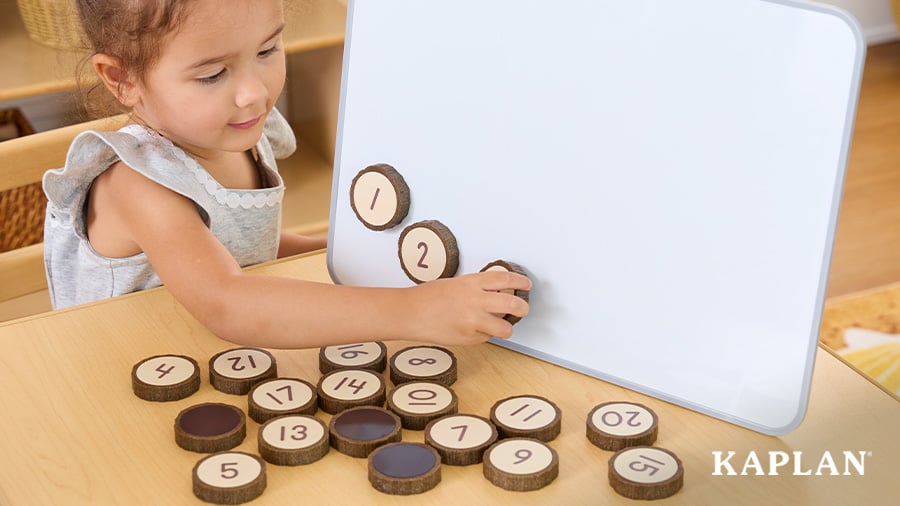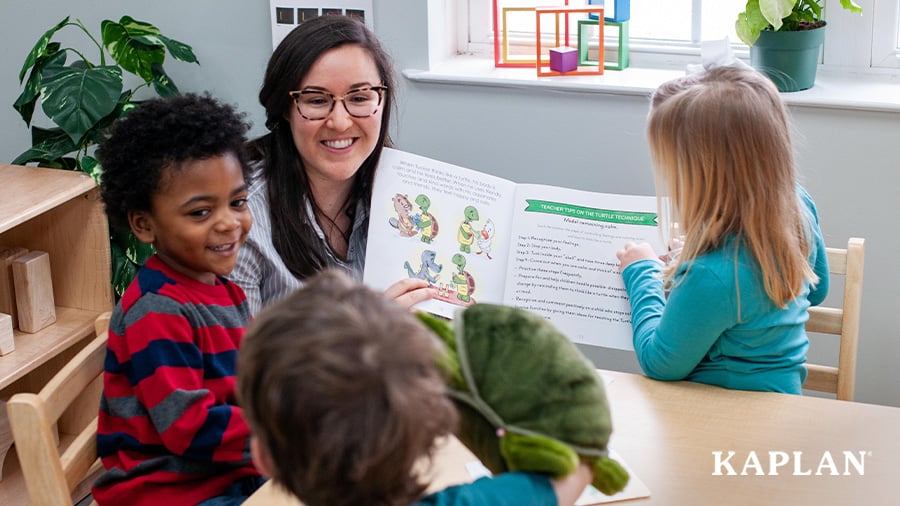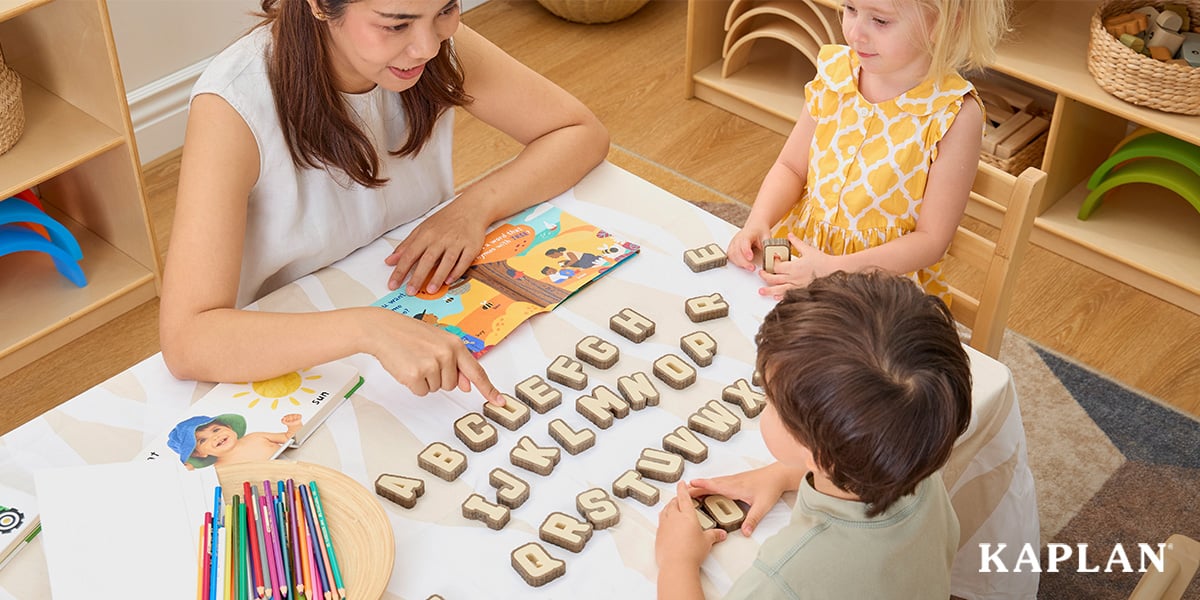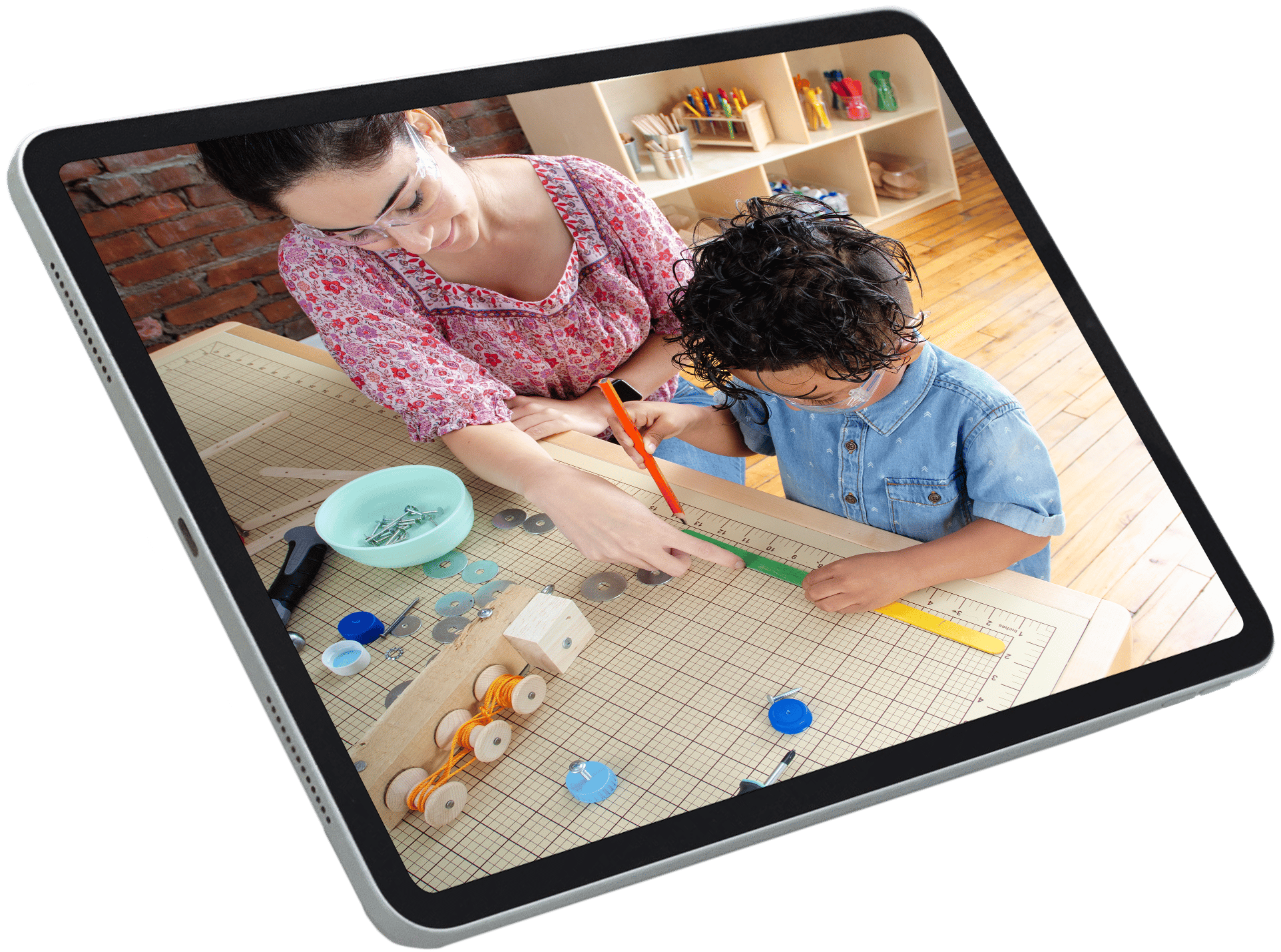Brain development starts from the bottom up. It begins with simple neural connections that pave the way for more complex thinking, learning, and behavior over time. Children's development follows a similar incremental path. They learn to listen before speaking, balance before walking, and recognize letters before reading.
That's how learning should work, according to a panel of education experts who co-authored a recent guide from the National Center for Education Evaluation (NCEE). Among the panelists is Dr. Julie Sarama, a nationally recognized leader in early math development and co-author of the Connect4LearningⓇ curriculum. In the guide, "Preparing Young Children for School," Dr. Sarama and her co-authors emphasize the importance of building skills in a sequenced order to ensure children are well-prepared for kindergarten.
So, how can you teach children new skills and concepts in ways that align with their natural learning tendencies? It may be tempting to teach what's fun and familiar. But skipping foundational skills or introducing new concepts based solely on seasonal themes can create readiness gaps that affect early learning.
In this article, we'll explore the benefits of implementing a structured, sequential teaching approach and resources for aligning learning with children's natural development.

What is sequential learning (and why does it matter)?
Sequential learning is an instructional approach that teaches skills in a step-by-step progression. Moving from easier to harder skills follows the way children naturally develop. It builds upon what they already know to introduce more challenging skills that will prepare them for kindergarten.
Dr. Doug Clements, another leading voice in early childhood math and co-author of Connect4LearningⓇ, calls this approach "learning trajectories." Learning trajectories are a teaching method that helps children sequentially develop math skills. Based on his research, teaching math concepts out of order may mean children lack the deeper thinking skills they’ll need for more advanced math.
Take counting as an example. Children don't start counting and magically understand numbers. Instead, they follow a clear developmental progression. According to Dr. Clements, learning to count begins with basic skills, such as subitizing, or knowing "how many" without counting.
This same sequential pattern reflected in learning trajectories happens across all developmental domains:
- Motor development: Children master gross motor skills, such as crawling and walking, before developing fine motor skills, like holding a pencil or buttoning a shirt.
- Literacy: Recognizing letter sounds comes first, and then children move to decoding words before reading fluently.
- Social-emotional learning (SEL): Learning to identify emotions precedes the development of self-regulation skills needed to navigate complex social interactions.
When teaching aligns with children’s natural learning progressions, each skill builds upon the last. This type of approach creates a solid foundation for kids to grow and learn more easily as they develop.
What's the best way to apply sequential learning in your early childhood classroom?
Relying on random or one-off learning activities can create skill gaps that affect future learning. There's a better approach, according to the co-authors of "Preparing Young Children for School." They suggest following a sequential curriculum that introduces concepts in a developmentally appropriate way.
So, what defines a developmentally appropriate curriculum? To start, the curriculum should introduce skills in a clear, age-appropriate order. That means introducing skills in a way that mirrors children's natural development and new skills build on what they already know.
Here are other key features of a strong sequential curriculum:
- A clear progression of skills: Each skill builds sequentially from simple to complex, with each consecutive lesson preparing children for the next challenge.
- Alignment with developmental stages: Learning progressions reflect research about how children's brains and abilities develop, ensuring instruction matches children's readiness to learn.
- Integration across multiple domains: Seamlessly connects skill development across various areas, from math to inquiry-based learning.

Is there a curriculum that supports sequential learning in early childhood?
Yes, there is! Connect4Learning® is a research-based early childhood curriculum that applies validated teaching strategies across math, literacy, science, and social-emotional learning. Developed by leading early childhood researchers—Dr. Doug Clements, Dr. Julie Sarama, Nell Duke, Ed.D., Dr. Mary Louise Hemmeter, and Dr. Kimberly Brenneman—this curriculum helps early educators provide structured, developmentally appropriate learning experiences that build sequentially over time.
Developed by early childhood experts Drs. Doug Clements, Julie Sarama, Mary Louise Hemmeter, Kimberly Brenneman, and Nell Duke, Ed.D., this curriculum helps educators provide structured, developmentally appropriate learning experiences that build sequentially over time.
Here's what you can expect from the Connect4Learning curriculum:
1. Covers key domains
Connect4Learning doesn't address skills in isolation. Instead, it integrates learning across domains while maintaining clear sequences within each area:
- Math follows proven learning trajectories for number sense, geometry, measurement, and algebraic thinking.
- Literacy builds sequentially from phonological awareness through emergent reading and writing.
- Science develops inquiry skills and conceptual understanding through hands-on exploration and experimentation.
- Social-emotional learning helps children develop self-regulation skills, social skills, and emotional intelligence.
2. Provides a clear scope and sequence
Educators know exactly what skills to focus on, when to introduce new ones, and how to build on children's previous learning. Connect4Learning equips both new and experienced educators to teach in a way that aligns with children's natural learning progressions.
3. Includes ready-to-use resources
Educators can spend less time on planning and hit the ground running with ready-made activities. These resources include detailed lesson plans, assessment tools, books, and custom games.
Empower early learners with a curriculum that grows with them.
When teaching aligns with children’s natural developmental progressions, everyone benefits. Children build the basic skills they need for future learning, and educators learn to teach in ways that match each child’s stage of development.
Connect4LearningⓇ offers a comprehensive, research-based curriculum that matches children's natural growth. It equips early educators to help children grow from simple to complex skills, preparing them for kindergarten and beyond.
Explore our comprehensive curriculum guide to see how Connect4LearningⓇ can support sequential learning in your early childhood program.


